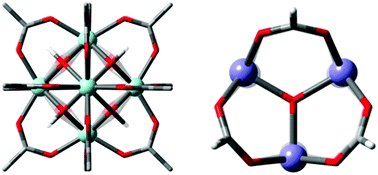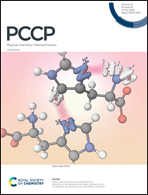Performance of GFN1-xTB for periodic optimization of metal organic frameworks†
Abstract
Tight-binding approaches bridge the gap between force field methods and Density Functional Theory (DFT). Density Functional Tight Binding (DFTB) has been employed for a wide range of systems including proteins, clays and 2D and 3D materials. DFTB is 2–3 orders of magnitude faster than DFT, allowing calculations containing up to ca. 5000 atoms. The efficiency of DFTB comes via pre-computed integrals, which are parameterized for each pair of atoms, and the requirement for this parameterization has previously prevented widespread use of DFTB for Metal–Organic Frameworks. The GFN-xTB (Geometries, Frequencies, and Non-covalent interactions Tight Binding) method provides parameters for elements up to Z ≤ 86. We have therefore employed GFN-xTB to periodic optimizations of the Computation Ready Experimental (CoRE) database of MOF structures. We find that 75% of all cell parameters remain within 5% of the reference (experimental) value and that bonds containing metal atoms are typically well conserved with a mean average deviation of 0.187 Å. Therefore GFN-xTB provides the ability to calculate MOF structures more accurately than force fields, and ca. 2 orders of magnitude faster than DFT. We therefore propose that GFN-xTB is a suitable method for screening of hypothetical MOFs (Z ≤ 86), with the advantage of accurate binding energies for adsorption applications.

- This article is part of the themed collection: Benchmark Experiments for Numerical Quantum Chemistry


 Please wait while we load your content...
Please wait while we load your content...